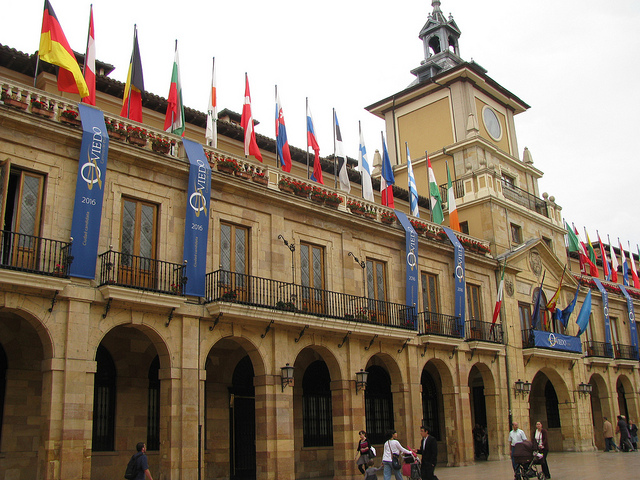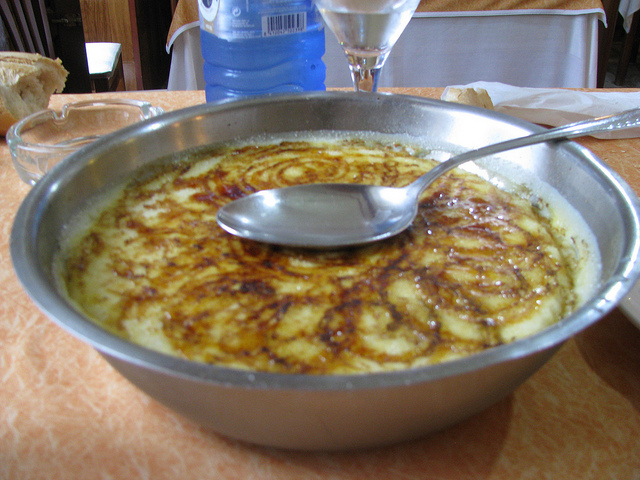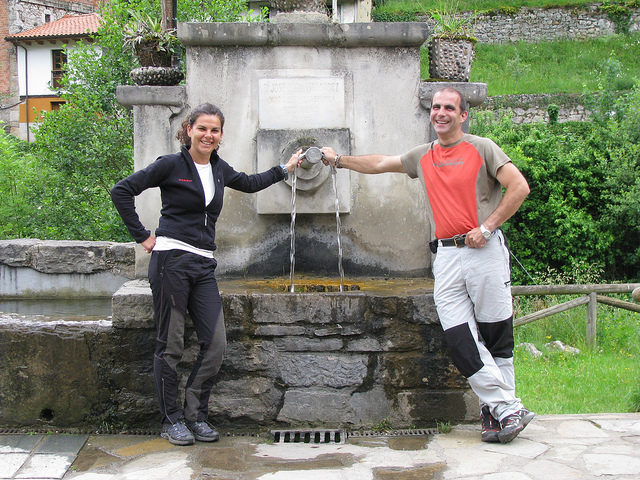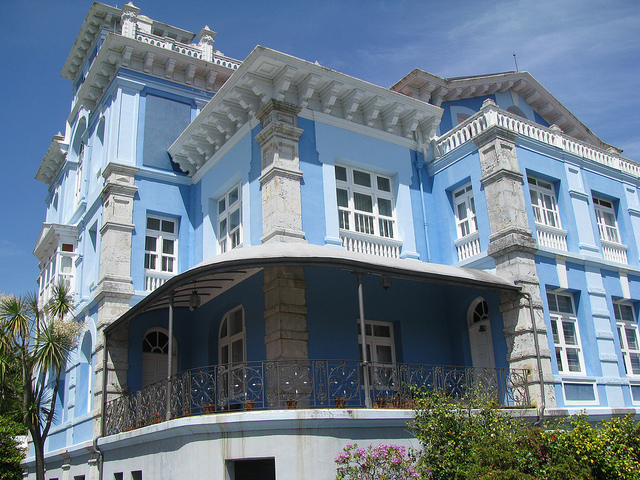Spain has long been one of my favourite travel destinations. I love the Spanish language and am fascinated with Spanish history and culture. Since 2002 I have been to Spain several times and had a chance to see places such as Barcelona, Valencia, the southern province of Andalusia, the Atlantic island of Tenerife and the islands of Ibiza and Mallorca in the Mediterranean.
 Driving through the mountains of Asturias
Driving through the mountains of Asturias
But there is one region in Spain that I had never been to, and it really captured my imagination: España Verde, the verdant green regions of Northern Spain that encompass the autonomous communities of Galicia, Asturias, Cantabria and the Basque Country. Asturias in particular is an area I have long wanted to visit because of its location on the Atlantic Ocean and the rugged Picos de Europa mountain chain. I really love the combination of mountains and oceans, and Asturias became my dream destination for my 2010 trip to Europe.
 The Asturian mountains
The Asturian mountains
For the past few months I had spent quite some time working with the official tourism authority of Asturias whose travel experts were extremely helpful in putting together an extensive itinerary that would expose me to all the diverse facets of this unique principality. My travel schedule would take me to important historic cities, the beautiful coastline and the imposing mountain areas of Asturias. My week in Asturias would be the prelude to almost a month in Europe that would also include a few days in Madrid, almost a week in Austria and four more days in Rome at the end of my European adventure.
 Santa Maria del Naranco, a UNESCO World Heritage Site near Oviedo
Santa Maria del Naranco, a UNESCO World Heritage Site near Oviedo
A tight travel budget motivated me to search for the best available flight options and I managed to find a flight with Air Transat, a Montreal-based airline that flies to 60 destinations in 25 countries. My flight to Madrid with a return back to Toronto would cost less than CAD $500 (excluding airport taxes), an unbeatable price for a trans-Atlantic flight with different arrival and departure destinations. Asturias is located about five hours from Madrid and a rented vehicle would give me all the necessary flexibility to explore the nooks and crannies of Asturias.

Ribadesella & the Sella River: one of my favourite spots in Asturias
My flight was reasonably uneventful, with the exception of a passenger who tried to smoke on the plane which triggered the smoke detector. During our stopover in Montreal the authorities came to talk to him and I was not sure if he was actually arrested in the end. On the positive side I ended up chatting with a father-son team from London, Ontario, who were going on a two-week trip to Spain together. Their daughter / sister was going to join them and they were looking forward to a wonderful family bonding experience while exploring the beautiful country of Spain.

Playa del Sablón in Llanes on the Asturian coast
Shortly before noon I arrived at Madrid Barajas Airport and picked up my rental car at the Hertz counter. Then I started my drive on the well-signed highways of Madrid and admired the mountain chains north of the Spanish capital. Further north, in the province of Castile and León, the landscape became a lot flatter, full of wheat fields and wind farms. Spain, incidentally, is a leader in renewable energy: in Castile and León more than 70% of total electricity demand comes from renewable energy, and world-wide, Spain is the third biggest producer of wind power. I was duly impressed.

Colourful buildings in Oviedo
North of León, the landscape started to change again: mountains started appearing on the horizon and I was rapidly nearing my destination. The Principality of Asturias (Principado de Asturias) is one of Spain’s autonomous communities. Its central feature are the Cantabrian Mountains in the south which form the natural border with the province of León. In the north the Asturian coastline stretches several hundred kilometers along the Cantabrian Sea, which is part of the Atlantic Ocean.

Coastline in Llanes
The climate in this northern part of Spain is more varied and features humid and warm summers, with cold winters. During my stay in late May I was hoping to have quite a bit of sunshine, but I was prepared for the fact that I might also encounter some rain which is the reason behind the lush green vegetation in Asturias. Together with the mountainous terrain, the verdant green landscapes and the plentiful cheese and milk-producing cows, Asturias has earned the nickname “Spanish Switzerland”. Indeed, with my Austrian roots, I immediately felt at home in Asturias as the landscapes reminded me so much of the Alps where I had grown up.

Asturias felt so much like home….




